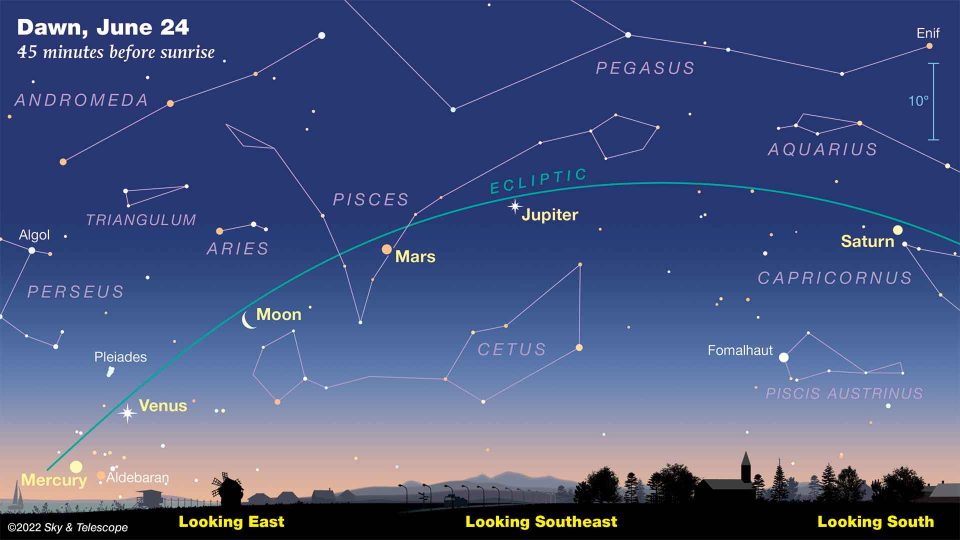
NASA picture shows once-in-1,000-years phenomenon, 'Planet Parade'

The National Aeronautics and Space Administration (NASA) on Monday (January 2) shared a picture of the night sky where all the planets of our solar system were visible at the same time, as seen from Earth. The phenomenon is called the ‘planet parade’ wherein the planets Mercury, Venus, Mars, Jupiter, and Saturn are simultaneously visible to the naked eye from Earth.
The picture was shared by NASA as the Astronomy Picture of the Day (APOD). It was taken in late December 2022 by the photographer and astronomer, Tunç Tezel, in a village in Turkey. The image also captured the moon and bright stars like Altair, Fomalhaut, and Aldebaran. The planets Neptune and Uranus were below visibility, making this a nearly all-planet panorama, wrote NASA.
During this phenomenon, five of the planets are visible to the naked eye. The two planets that are furthest away, Uranus and Neptune, are visible if viewed with binoculars.
Also read: NASA’s SOFIA discovers water on sunlit surface of Moon
Those closer to the equator were more likely to be able to see all the planets appear in a vertical line up into the sky.
Featuring Mars, Uranus, Jupiter, Neptune, Saturn, Mercury, and Venus in one frame, the photo went viral and people were amazed.
The planets in our solar system are divided into two: the Inner solar system consisting of Mercury, Venus, Earth, and Mars, and the Outer solar system made up of Jupiter, Saturn, Uranus, and Neptune. The ‘planet parade’ is a very rare phenomenon, and it occurs once every thousand years when all these planets form a straight line.


